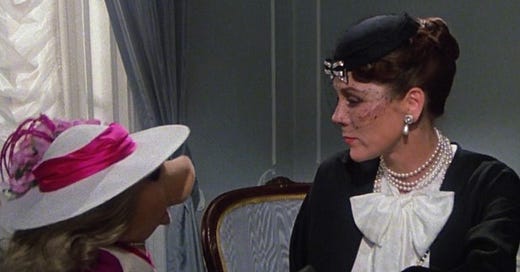This week’s rebroadcast from 2004 covers the difference between characters sharing information with each other and characters sharing information with the audience.
Dialogue
FRANK
Let's say we try to keep the dysfunction indoors, huh?Exposition
O'MALLEY
Thompson was a down-on-his-luck bookie who thought he could swindle Ackland out of the ticket profits. He wasn't counting on Rickman having the same idea.Always ask yourself: Would the character actually say this, or are they only saying it because you need the audience to know some fact or detail? If the answer is the latter, you’re writing exposition and not dialogue.
That’s not good.
At its worst, you risk “M Syndrome,” named for the James Bond boss whose sole function seems to be telling 007 all the backstory so he knows who to shoot. (This was parodied in the Austin Powers movies by Michael York’s character, Basil Exposition.)
Honestly, there are times when you really do need to have a character say something that’s purely plot. In certain genres, like police procedurals, exposition is pretty much par for the course. But to the degree possible, try to avoid situations where characters are spouting information.
Wherever possible:
Show the information, rather than having a character say it.
Try to follow a natural line of thought: A to B to C.
Simplify. The reader may not need to know everything.
Keep your hero active in learning the information, rather than passively listening.
Balance natural speech patterns with efficiency. People rarely say things as concisely as they could.
Avoiding exposition is hard, especially in plot-dependent stories. But it’s one of the first things a reader notices, so spend the time to deal with it.
Are you enjoying this newsletter?
📧 Forward it to a friend and suggest they check it out.
🔗 Share a link to this post on social media.
🗣 Reach out to Chris on Twitter @ccsont or email us at inneresting@johnaugust.com if you have ideas for future topics (or just want to say hello)!




